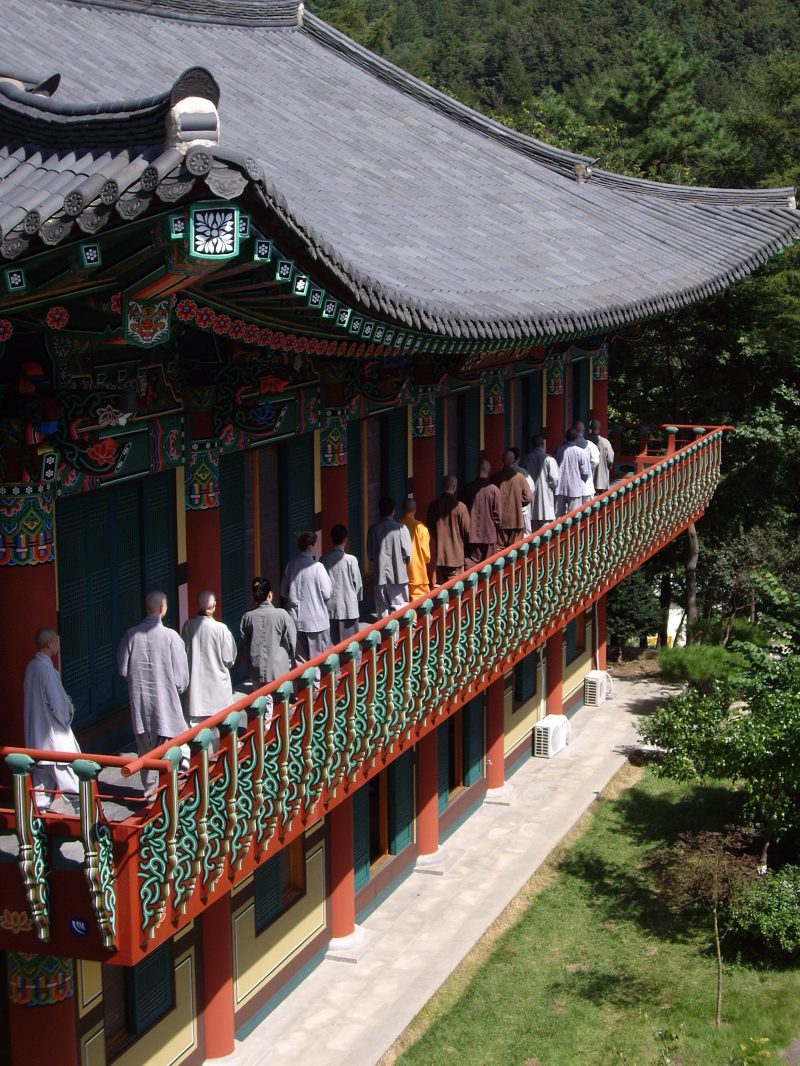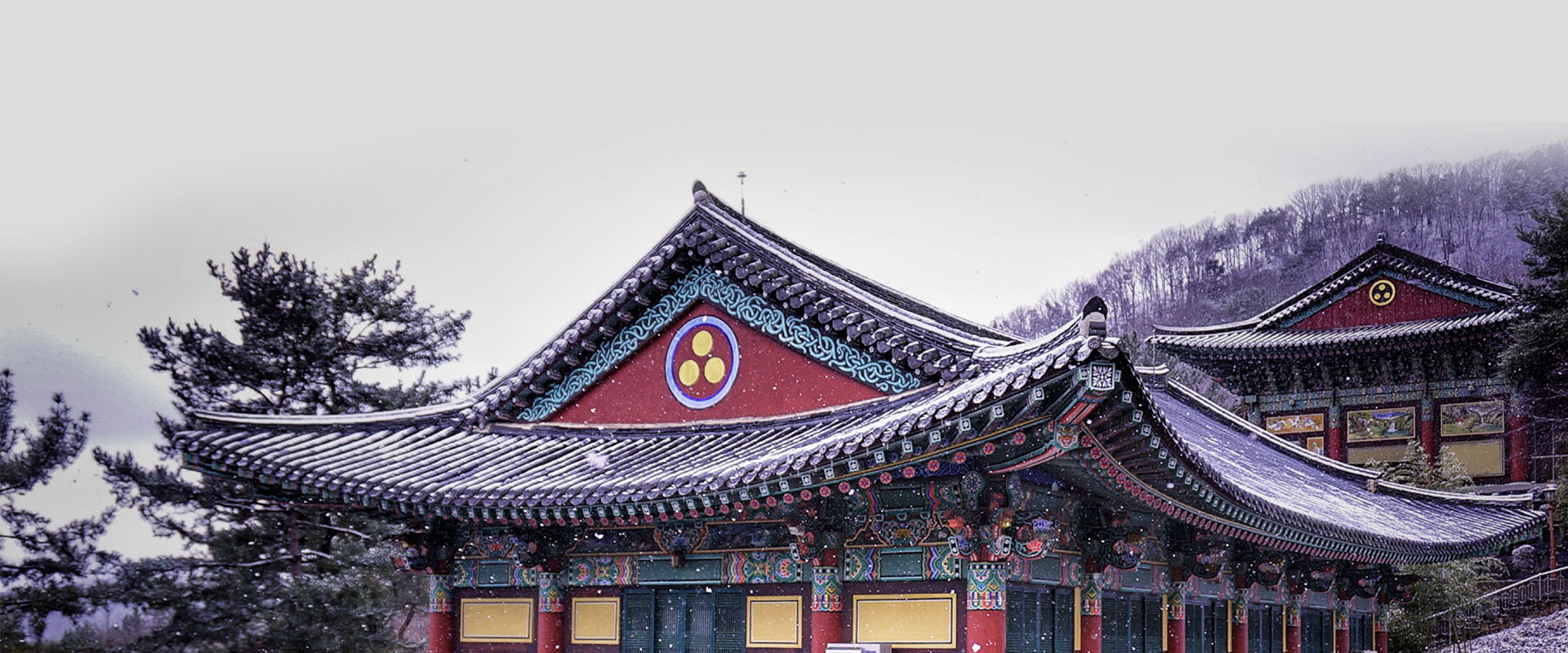Seung Sahn International Zen center Musangsa is open to anybody who seeks the true meaning of life and its direction disregarding race, religion, nationality and age. Musangsa walks together with you on the Boddhisattva path. Through practicing with us, you will be able to find your true self and the help your neighbors, society and whole world with your compassionate mind.

Introduction

Musangsa was founded by Zen Master Seung Sahn in 2000 and is serving as the head temple in Asia of Kwan Um School of Zen (KUSZ), an international organization founded by the Zen Master.
Having broadly taught Buddhism and Zen practice overseas for around 30 years, Zen Master Seung Sahn brought numerous foreign disciples to Korea. He first opened an international Zen center at Hwa Gye Sa in Seoul and 10 years prior to his death, started to search for a land where a practicing center could be built with the aim of fostering the future practice of the KUSZ. After a period of searching, he decided to settle Musangsa at a location where the clear energy from Guk Sa Bong (National Teacher’s Peak) at Gyeryong Mountain flows down.
Musansa sits directly beneath Guk Sa Bong (National Teacher’s Peak), where over 500 years ago, the eminent National Teacher Mu Hak Daesa said that 800 great Dharma teachers would appear from this mountain and help the world. Since ancient times, Gyeryong Mountain has been known as one of the most important mountains in Korea for its strong and mystic energy that, throughout history, has attracted many spiritual practitioners. Zen Master Seung Sahn’s vow was that many practitioners from around the world would come to practice Zen at Musangsa and go back to teach in their own countries.
From the initial phase of the temple, he appointed Zen Master Dae Bong, one of his American disciples who had received Dharma Transmission, to be the Resident Zen Master of Musangsa, giving him direct charge of overall practice and operation of the temple. Zen Master Dae Bong has been devoting himself not only to guide practitioners coming from all over the world in finding their true self, but also to make Musangsa a cross road where they can experience Korean Zen Buddhism’s 1,600-year history as well as interacting with Korean culture.
Moreover, the experience of practicing together with multicultural people will help young Koreans who are not familiar with Buddhist teaching and practice, to find their own spiritual path and direction in their life.
At Musangsa, 4 groups of practitioners (monks, nuns, lay men and lay women) gather together and practice bowing, chanting and sitting meditation during 365 days of the year. Most of the practice schedule is open to public through specific programs, such as weekend retreats, short retreats during holidays or 3 months retreats (Kyol Che) each in summer and winter, allowing both beginners and experienced practitioners to join.
